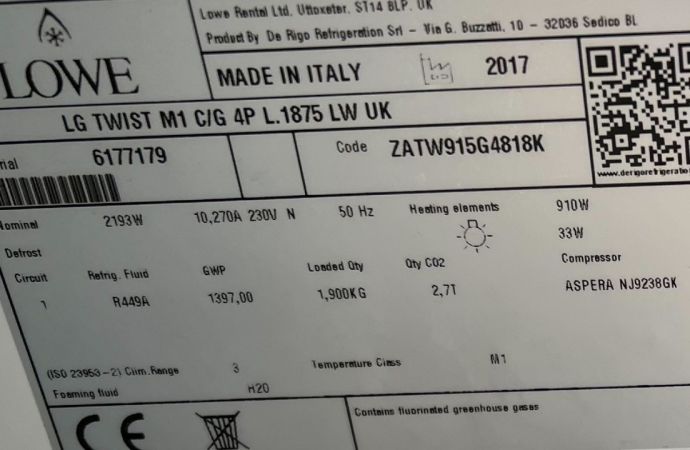Some manufacturers are prepared for 500-g systems, while others will react to regional adoption.

Tim Figge, CEO of Hussmann, at ATMOsphere America 2019
In the wake of the International Electrotechnical Commission’s recent approval of an increase in the charge limit for hydrocarbons to 500 g from 150 g, equipment manufacturers are assessing their product portfolio in anticipation of regional adoption of the higher hydrocarbon charge sizes.
Some are already prepared, while others will be making updates.
Italian component manufacturer Carel is already offering controls for plug-in and water-loop cabinets equipped with 500 g of hydrocarbons, said Diego Malimpensa, application manager for Carel. “Due to the fact 500 g will not be easily accepted in all countries, we have also comparable solutions with CO2,” he added.
Having provided cases with higher charges under EN 378 in Europe, FREOR is ready for the 500-g limit in most of its cabinets and showcases, said Jurate Mizare, marketing manager for FREOR. "We believe it will facilitate our expansion in the market.”
Tecumseh is "well-prepared to meet [higher hydrocarbon charges] with larger displacement R290 compressors and value-added systems in both fixed-speed and variable configurations," said Robert Terry, director, global product management, variable speed platform, for U.S. compressor manufacturer Tecumseh.
Embraco currently makes HFC compressors serving larger than 150-g charges, and transitioning those to 500-g hydrocarbon units would “not be a big deal,” said John Prall, applications engineer for Embraco North America.
Our product roadmap is aligned to managing any future transitions, based on final market-specific regulations."
– Drew Tombs, AHT Cooling Systems USA
Some companies noted satisfaction with their current 150-g systems, though with an eye on the future.
For example, U.S.-based Hussmann believes its microDS R290 system can accommodate retailers using up to 150 g of R290 for both open and closed cases, said CEO Tim Figge at the ATMOsphere America conference in June. “We feel confident in our solution, but ourportfolio continues to develop.”
AHT Cooling Systems USA, which has been delivering commercial refrigeration equipment utilizing R290 in North America since 2013, “can provide our complete portfolio based on today's standards,” said Drew Tombs, president.“Our product roadmap is aligned to managing any future transitions, based on final market-specific regulations, but we will not take a ‘wait and see’ approach. AHT's system solutions are ready to support food retailers meet their sustainability goals today."
Tombs added that he sees a growing market demand for R290 cases “not only in new stores but, more importantly, in replacement projects for under-performing and end-of-life systems.”
Thailand-based Sanden Intercool, one of Southeast Asia's largest manufacturers and exporters of commercial refrigeration equipment, has devised "a concise three-year plan to develop a complete range of green commercial, professional and retail refrigeration equipment for the beverage, dairy, ice cream, foodservice and retail store segments, said Alex Panas, commercial director, Sanden Intercool.
At the moment, all of Italian OEM Epta’s self-contained units using propane as a refrigerant are at the limit of 150 g per circuit. “We are currently assessing the potential for products with higher charge limits, in order to plan new product developments according to market requests,” said Francesco Mastrapasqua, advocacy & regulatory affairs manager.
“We consider the introduction of this new standard as on opportunity for a broader use of climate-friendly refrigerants worldwide, giving a significant contribution to the mitigation of climate change.”
To read the complete Accelerate Magazine cover story from which this article is excerpted, click here.
Related stories

_1636620968.jpeg)





